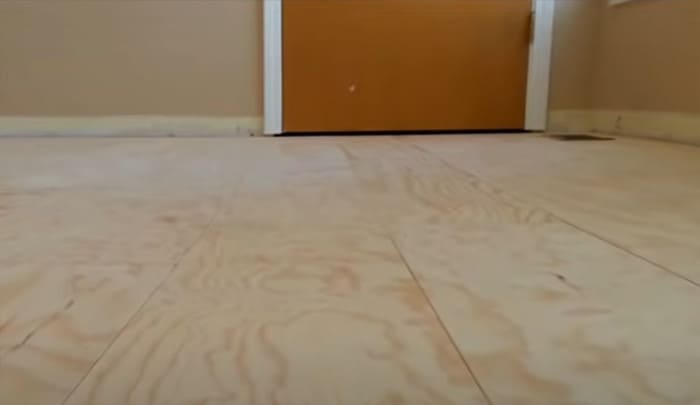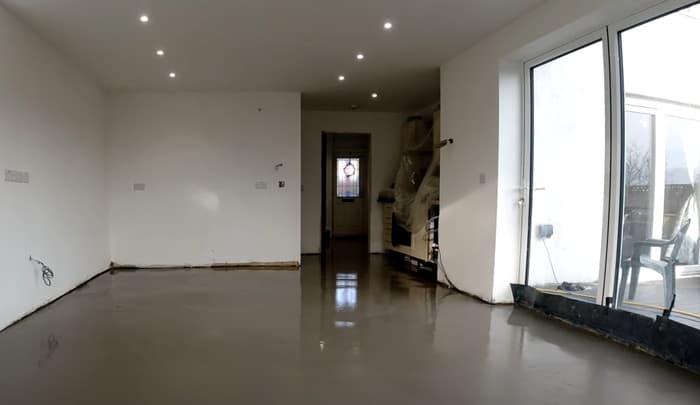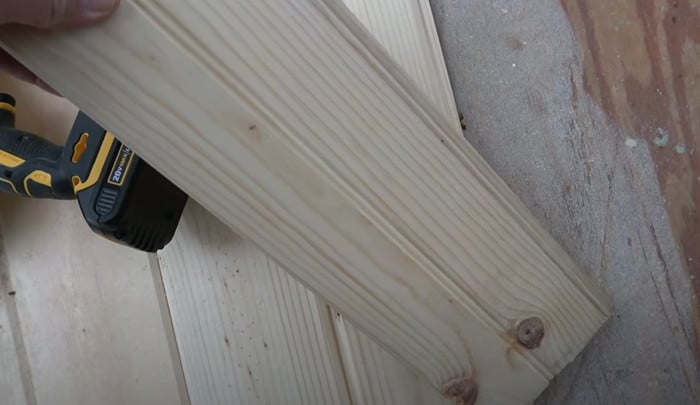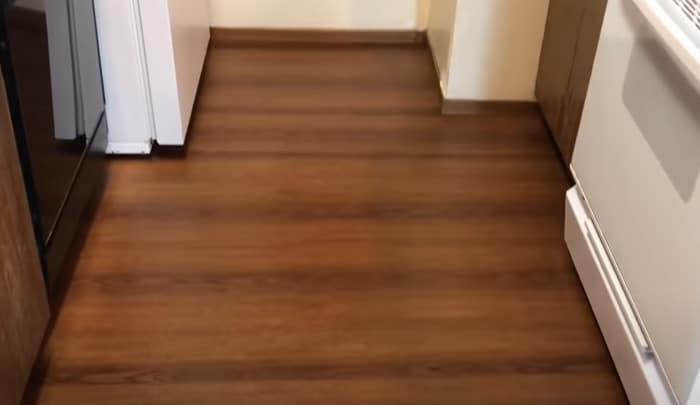Welcome to our blog post on how to get your floors installed… cheaply and quickly! We know that choosing from various flooring options can be an overwhelming process, especially when you’re trying to stay on budget. But it doesn’t have to be. We’re here to show you that not only is it possible to get super affordable quality flooring, but you can also have it installed quickly and easily! With our top tips, you can get floors that look great, fit into your budget and won’t leave you with a hefty installation bill. Let’s get started!
You may be able to find really cheap floors in discount stores or at home improvement and flooring outlets. Shopping around and comparing prices is often the best way to ensure you are getting the lowest price.
“In my two decades of service, affordability has never been synonymous with low quality. Efficient methods, combined with the right materials and skill set, can result in both a speedy installation and a durable, attractive floor. Remember, it’s the expertise behind the process that truly makes the difference and keeps your floor serving you for years.”
Remy Olivander, Flooring Specialist
Cheap Flooring Options for Any Budget
When it comes to finding cheap flooring options that fit your budget, there is no shortage of choices on the market. It may be tempting to go with the cheapest possible option, but it’s important to research a few different options and determine which one works best for you in terms of cost, durability, and style. For instance, you might consider installing laminate flooring as an affordable and stylish option.
One reasonably affordable option is laminate flooring, which consists of five layers of synthetic material that are bonded together with a backing layer for increased stability. The savings come from the fact that it does not require refinishing; instead, this is simply wiped clean as needed. However, some homeowners may want to stay away from laminate as it can feel less natural than traditional wood flooring and can easily be scratched or damaged if heavy furniture is moved on top of it.
Ceramic tile can also be an economical choice when it comes to flooring because of its long-lasting characteristics. Its easy maintenance and durability makes it popular choice for bathrooms, where moisture often seeps through the ground tiles. On the other hand, ceramic tile usually requires professional installation and removal costs could become costly when working with intricate designs and shapes.
Vinyl plank flooring is also a great budget-friendly option as it has no visible grout lines allowing for a much more continuous look to your flooring. It’s also waterproof and doesn’t require any additional sealing or waxing – reducing upkeep costs. However, if you’re considering installing hardwood floors without a subfloor, vinyl plank might not be the best choice. It’s important to note that vinyl plank flooring can be difficult (and potentially messy) to install yourself and could require professional help anyway.
With clever planning and research into the available options, cheap flooring solutions are within reach. Depending on your budget and desired style, any one of these materials could be ideal for achieving cost-effective results in your home or business. Moving forward we will focus on different kinds of cheap flooring materials in order to ensure that you find the perfect solution for your needs.

Different Kinds of Cheap Flooring Materials
Cheap flooring materials are a popular choice for budget-conscious homeowners who want to refloor their space without breaking the bank. These materials come in a wide variety of styles, from vinyl to hardwood and many more.
Vinyl flooring is one of the most affordable types of flooring on the market because it’s relatively easy to install and requires minimal maintenance over its lifespan. It also comes in a wide array of colors, patterns, and textures that can easily fit any home style. However, some argue that vinyl isn’t as durable or scratch-resistant as other flooring types, like wood or tile.
Laminate flooring is usually made up of several layers of different materials such as wood, plastic composites and melamine resins. It offers an attractive finish that’s scratch-resistant and easy to clean. However, even though it generally lasts quite some time with proper maintenance, it could eventually need to be replaced as it’s not quite as durable as some other options.
Cork flooring is another affordable option for those looking for a green solution for their space. Cork is naturally sourced from tree bark so it’s eco-friendly and can be recycled later on its life cycle if desired. It’s also comfortable underfoot and provides sound insulation in the room which helps absorb noise from foot traffic and other activities in your home. But since cork is a softer material than others, you may need to replace it sooner than more expensive alternatives because it’s prone to wear and tear over time.
Finally, linoleum is an old-school option that has been around since the late 1800s but remains a popular choice among homeowners due to its affordability and ease of installation. It’s available in countless colors, prints, and cuts, so designing your home with this type of material won’t be difficult. However, linoleum can only sometimes be patched up or repaired when damaged or stained – making full replacements necessary more often than not. If you’re dealing with laminate flooring on uneven concrete, linoleum might be a better option to consider.
As you can see there is a variety of options when it comes to cheap flooring and each material has its own pros and cons depending on what you’re looking for in terms of budget, appearance and long term durability. Now we’ll look into how much these materials cost so you can make an informed decision about the best choice for you and your home. With that said let’s take a look at the prices of cheap flooring materials in the next section!
Must-Know Points
Cheap flooring materials are a great way to refloor your space without breaking the bank. These materials include vinyl, laminate, cork, and linoleum and come in a variety of colors, patterns, and textures. Each material has pros and cons such as durability, sound insulation, price, and ease of installation. It is important to weigh the options and use price to inform your decision when considering which material is right for your home.
Prices of Cheap Flooring Materials
When it comes to installing cheap flooring materials, the quality of the material is not the only thing to consider. Prices can vary drastically between different types of flooring, so it’s essential to weigh both price and quality before making a decision.
There are two primary factors that drive prices when it comes to cheap flooring materials: labor and materials. Materials cost can range from a few dollars per square foot for basic vinyl tiles or carpet remnants, to much more expensive options such as hardwood or ceramic tile. Similarly, labor costs depend on the size and complexity of the project, and whether any special installation techniques are required.
In most cases, it may be possible to get good deals on flooring materials if you bargain with your contractor or shop around for the lowest costs. However, there is always a risk when buying cheaper flooring materials that you may end up with products of poor performance or quality. A good rule of thumb is to buy the best quality material you can afford within your budget in order to ensure long-term satisfaction with your investment.
As you research your options and compare prices, don’t forget to factor in added expenses like underlayment, grout, trim pieces and adhesive. These items may seem small but they all add up quickly and can put a dent in your budget if you don’t plan ahead. If you’re struggling to decide between different hardwood floors, considering these additional costs can help you make a more informed decision.
Now that you know what costs to look out for when researching cheap flooring materials, let’s take a look at ballpark prices for some popular materials in our next section.

Ballpark Prices for Popular Materials
When looking to get the best bang for your buck, certain flooring materials often come up as contenders. To help you understand the ballpark prices of popular materials, we have compiled this section so that you can get a better intention of what to expect when shopping around.
Engineered Hardwood: Engineered hardwood is a cost-effective choice when compared to solid hardwood—a durable material that both looks and functions great in any room. Generally, prices vary depending on the quality of wood, but quality engineered hardwood floors typically range from $3 to $10 per square foot.
Laminate: Laminate floors are very popular because they look great and are easy to install. Laminate tends to be more affordable than other flooring options, averaging between $2 and $7 per square foot.
Vinyl Plank or Tile: Those with tighter budgets may want to consider vinyl plank flooring or tile. This option does not last as long as some other materials but costs less than most, ranging from just 50 cents to $4 per square foot depending on the style and brand chosen.
Carpet: For softness and warmth underfoot, carpet may be the right choice. The cost of installing carpet varies significantly based on factors like style, type of padding used, and where it is being installed, but an average price range is usually between $15 and $30 per square yard (or $1.60 – $3.33 per square foot).
As with any purchase decision, it’s important to balance quality against pricing considerations when choosing a flooring material. Weigh the pros and cons of each material before making a decision so that you get the floor that best suits your needs without breaking the bank.
Now that you have an idea of the ballpark prices for different types of flooring materials, let’s move on to talking about durable flooring options on a budget in our next section!
Durable Flooring Options on a Budget
When seeking out relatively inexpensive flooring options to spruce up a home or commercial space, it is important to consider the durability of the product. Though price is often a top priority, choosing a flooring option that is cheap but not built to last could lead to costly repairs and replacements in the future. Fortunately, an array of durable floors are available on a budget.
If seeking a wood-like material, luxury vinyl tiles (LVT) are an excellent choice. This product simulates the look of hardwood or stone and is particularly prevalent in commercial spaces. Its materials make it highly resilient with strong scratch resistance and water resistance capabilities. There are also no sealers required as with other types of flooring such as laminate or tile. Furthermore, LVT is considered one of the more affordable choices in terms of installation costs due to its ease of use.
For those concerned about environmental issues, bamboo may be an attractive proposition from both a financial perspective as well as its green factor. Bamboo has been gaining traction for its sustainability characteristics and budget-friendly cost compared to some traditional hardwood alternatives. It is also known for its strength and can even be harder than oak depending on type and quality purchased. Maintenance requirements are minimal but do require sealing every few years which adds somewhat to its overall cost over time.
Though carpet once had a reputation for being low quality and difficult maintenance, advances in technology have seen it become a valid alternative when considering factors such as durability and cost savings. Carpeting can be found at very reasonable prices when shopping around, especially on sale items or bulk discounts from retailers or installers. There are also various levels of carpets based on their grade or fiber content that influence their lifespan so make sure to plan ahead for what best meets your needs without necessarily spending more than necessary.
In conclusion, there are numerous affordable flooring options that don’t sacrifice durability when managed properly over time. By choosing carefully and taking the proper steps to maintain their condition, long-term effects from wear and tear can be kept at bay while still benefitting from lower-priced flooring options at installation time. The next section will provide further guidance how to install these cheap floors quickly and easily once they have been chosen.
Installation of Cheap Floors
Installation of cheap floors is a great way to quickly and easily update the look of a room without breaking the bank. Depending on the type of flooring chosen, installation can be completed in a single day. For example, most types of carpet can be laid in one day, as long as it is already cut to size. Vinyl tiles require minimal preparation and can also be laid within the same time frame or less. Laminate flooring is slightly more time consuming and thus may have an extended installation timeline; however, depending on the size of the space, this type of flooring can still be installed quickly.
Advantages to installing cheap floors include being able to save money and not having to hire expensive contractors. While there are affordable contractors who will do a satisfactory job and provide a warranty for their services, sometimes it makes sense to install the flooring yourself if you’re comfortable taking on the project. This method often cuts down costs drastically but there are key considerations to take into account such as safety procedures and if intricate subfloor work is needed.
On the other hand, if you are not entirely confident in your abilities to complete this project or you don’t have enough time, then hiring a professional contractor might make more sense from both an efficiency and safety standpoint. Professional contractors often offer warranties for their services and should have the overall process completed with sufficient attention to detail even when working with cheaper floors.
Overall, installing cheap floors has many advantages if done correctly but should be weighed against factors such as cost savings versus quality assurance which professionals can provide. With that said, let’s look at what costs are associated with installing these types of floors.

Costs for Installation
When it comes to getting really cheap flooring installed quickly and easily, the cost for installation is a major factor. On one side, homeowners may want to cut costs as low as possible and try to perform the installation themselves, or hire someone with very minimal experience at a discounted rate. Doing so, however, usually comes with certain risks. Inexperienced installers may not be able to provide a professional finish, leading to issues down the road such as an uneven floor or improperly sealed seams.
On the other hand, working with professional contractors can present a more expensive option upfront but may save money on repairs in the long run. Professional contractors have extensive experience with floor installations and will use high-quality tools and materials to complete the job. This ensures that any potential problems are prevented before they arise.
Ultimately, homeowners should carefully weigh their options when looking at costs for installation. They must decide which option better meets their budget while also taking into account the potential consequences of making either decision.
Though cost plays an important role in getting cheap floors installed quickly and easily, purchasing and installing those floors is equally vital for achieving successful results. In the next section, we’ll look at both of these topics in greater detail.
Purchasing and Installing Your Floor
When it comes to getting really cheap floors installed quickly and easily, your primary consideration is the actual purchasing and installation of your floor. The good news is that there are several ways to go about this task, depending on your budget, lifestyle, and handyman skills. To make sure you get the best deal and the highest quality floor possible, it’s important to consider all of the available options before beginning the installation.
For those who may be working with a stricter budget, DIY floor installation can be a great option. There are many different types of flooring that can be installed relatively quickly and cheaply, like vinyl or laminate flooring. Do-it-yourself guides provide detailed step-by-step instructions on how to install each type of flooring in your home; many of these guides are available for free online. With such rich resources at your disposal, installing a cheap floor yourself can save you time and money in the long run.
On the other hand, if you’re looking for an easier and more reliable way to get your floors installed quickly and easily, it might be worthwhile to trust the experts. Professional floor installers can provide you with higher quality materials, tools, equipment, and expertise than what you could access on your own. Even better still: they can handle any snags or problems that may come up along the way. However, since professional installation requires a budget allotment for labor costs as well as materials, you should expect to pay a significantly higher price for this option than for DIY projects.
Choosing between hiring professional help or tackling a cheap floor installation yourself will depend on a variety of factors—but no matter which path you choose, rest assured that there are plenty of viable options out there for getting really cheap floors installed quickly and easily!

Responses to Frequently Asked Questions with Explanations
Are there any second-hand stores or discount retailers that offer cheap flooring?
Yes, there are a few second-hand stores and discount retailers that offer cheap flooring. These stores often have deals on laminate, vinyl and other types of flooring that would be much more expensive to purchase brand new. Plus, these stores may also offer installation services, which can save you even more money. Another great option is buying tiles or planks from a big box store like Home Depot or Lowe’s and then having them installed by a professional contractor – this way you can get quality materials at a discounted rate. Finally, don’t forget about the power of bargain hunting online – there are some amazing sites that offer free shipping and discounts on refurbished flooring options that could be perfect for your home.
What types of flooring are available at a low cost?
There are various types of flooring available at a low cost. laminate flooring is one of the least expensive, as it is a synthetic material that can replicate the look of hardwood or stone, requiring less maintenance than natural materials and usually coming in plank pieces with an adhesive backing for easy installation. Vinyl plank flooring is also an economical choice, often replicating the look of wood or stone but requiring far less maintenance. Other options such as tiles or carpet can be found at a lower price point when considering synthetic materials, while cork and bamboo are more renewable natural resources that can also be purchased on a budget.
What are some tips for finding the lowest prices on flooring materials?
1. Shop around for the best deals – Compare offers from several different retailers to find the best price on flooring materials. Don’t settle for the first store you visit; you may find a much better deal elsewhere.
2. Look for bargains and sales – Keep an eye out for sales and special discounts. Many retailers offer limited time deals during certain periods of the year or have periodic clearance sales that can help you save money on your purchase.
3. Buy online – Many online stores, such as Overstock and Wayfair, offer discounts on flooring materials, so be sure to check out their websites when shopping around. You may even find coupons or codes that can save you even more money.
4. Take advantage of bulk-buying options – If you’re buying multiple types of flooring materials or need a large amount in a single purchase, ask if there any bulk-buying options available. Buying in bulk can often result in significant savings on your overall purchase cost.
5. Consider budget alternatives – Think about opting for alternative flooring materials that are more budget-friendly than the type you were originally looking at. Installing laminate flooring, for instance, is usually cheaper than hardwood but still looks great once installed.
References
https://www.thisoldhouse.com/flooring/reviews/hardwood-flooring-cost
https://realestate.usnews.com/real-estate/articles/what-are-the-best-alternatives-to-wood-flooring





I can personally share that cheap and quick doesn’t necessarily mean poor quality when it comes to flooring. I recently installed laminate flooring at my own home and it turned out to be cost-effective, time-saving, and absolutely beautiful.
I totally agree, Quinn. I’ve also found that laminate flooring is a perfect blend of affordability, ease of installation, and durability. Just last month, I installed it in my den, and the outcome was stunning with minimal strain on my budget.
I have to echo Rufus’s point. Just last year, I assisted my neighbor in installing laminate flooring in his living room. It was not only cost-effective, but with the right tools and a bit of elbow grease, we finished the job in a day. Pro tip: Invest in a proper floor cutter, it made the installation process a breeze!
Gideon, I completely agree. A good floor cutter can be a game changer in efficiency. I’d also add that having a rubber mallet on hand will save you from potential damage when locking planks together.
Gideon, Pritchard, I echo your points on the rubber mallet—it’s been a savior on many jobs. Also, knee pads might not directly affect flooring installation costs, but they certainly make the whole process gentler on your joints!
Having attempted my own floor installation before, I advise not underestimating the time commitment required – it got rather stressful when it took longer than I anticipated.
I completely agree with you, Templeton. A lot of times, people underestimate the time it takes for installations – what seems like a weekend project could easily turn into weeks if not properly planned.
Your concerns about installation timelines are valid Remy! I’ve seen so many DIYers miscalculate the time needed for installing new flooring. One should consider the type of flooring material chosen, the square footage of the space, plus potential challenges like leveling subfloors or cutting pieces to fit awkward room layouts – it can indeed drag out if not well-planned.